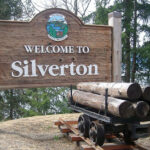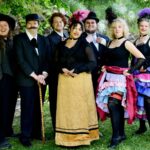Local fishermen grill Ministry of Environment reps about Kootenay Lake Action Plan
The Balfour Community Hall was packed to the rafters with concerned citizens anxious to hear Ministry of Environment representatives discuss the the nuts and bolts of the Kootenay Lake Action Plan.
The Action Plan is the MOE’s take on how to restore the troubled kokanee fishery in Kootenay Lake.
Jeff Burrows, Senior Fish Biologist with the B.C. Fish and Wildlife Branch, along with Matt Neufeld, Mike Ramsay, Holger Bohm, and Marley Bassett were on hand to answer any questions from the crowd about the plan.
And it didn’t take long for the audience to put the MOE staff on the hot seat as one of the first questions expressed concern that the action plan and the studies related to it existed in a closed system, and that it would give the Ministry more credibility if it were to be examined by an outside source, possibly from the United States.
“We know you’re the experts, but get somebody to validate what you’re saying, to help us believe in you,” the man said.
Burrows responded by explaining that the team involved in creating the plan consisted of members from all over the province and that validation will come eventually when their prediction models are either proven or disproven.
“One thing that will validate this is if the modeling predictions come true. If there’s a tick up in survival, if Kokanee recover,” Burrows said.
The Action Plan outlines measures to revitalize the incredibly low numbers of Kokanee salmon and their primary predators, the Gerrard Rainbow and Bull Trout, in Kootenay Lake.
The Kootenay Lake Action Plan began with the establishing of an advisory team in October of 2014, and over the last two years has implemented various methods of regenerating the fish population in the area.
Methods include the adding of nutrients to the lake, supplementation of Kokanee from other bodies of water, and virus assessment.
Moving forward, the Action Plan will identify the risks and benefits of Kokanee stocking, angling regulations and extra monitoring.
Another concern voiced was whether or not the fertilization efforts have done more for increasing the population of Mysid Shrimp than for helping to propagate more Kokanee.
“Are you exacerbating the problem by feeding these shrimp?,” a man in the crowd asked.
“Maybe they are direct competitors with the Kokanee and maybe they’re the things that are benefiting from the extra zooplankton out there. Maybe you’re creating a problem by feeding all these shrimp.”
Matt Neufeld, fish biologist with Fish & Wildlife Kootenay, explained that while this was an initial concern, the data has shown that shrimp populations have remained more or less steady since 1992.
“That actually was one of the predictions when they were considering nutrients in the first place. It went forward anyway, and it really didn’t materialize that way. We monitor for it, is the short answer,” he said.
Marley Bassett, fish restoration biologist with the Fish and Wildlife Compensation program elucidated on this further.
“Through the beginning there was no explosion of mysids,” Bassett said.
“Mysids are cannibalistic; they have self-regulating system in themselves. It didn’t look like that was the case during the nutrient program. This is a unique scenario where’s there’s lots of zooplankton in the lake and there’s not any Kokanee. Who can move into that system, is mysids. It was a major concern and part of our monitoring but we just haven’t seen it yet.”
One of the final questions of the evening was one that garnered many nods of agreement from the audience: Why only supplement Meadow Creek with Kokanee?
Right now it’s actually prime to recover South-Arm Kokanee,,” Burrows responded.
“But the Action Plan is focused on recovering Kokanee for Bull Trout and Rainbow, for the Fishery, and the best place to put them is Meadow Creek. Not because we can’t put them elsewhere and have a good egg to fry survival, but when those fry come back they’ll imprint on Meadow Creek. They will come back to a channel where we groom the gravel right and the next generation will have good survival.”
Last fall, provincial biologists counted 18,000 spawning kokanee in main body of Kootenay Lake and its tributaries, the lowest number since the annual count started in the 1964.
In response, the Province initiated an aggressive restocking program, extended the nutrient restoration program and changed fishing regulations to decrease Kokanee harvest and increase Gerrard trout harvest.
However, the province is pleased with a high survival rate for kokanee eggs planted into the Kootenay Lake spawning channel at Meadow creek and additional fry releases.
Kokanee are landlocked sockeye salmon and are second only to rainbow trout as the most popular game fish in B.C.


























Comments